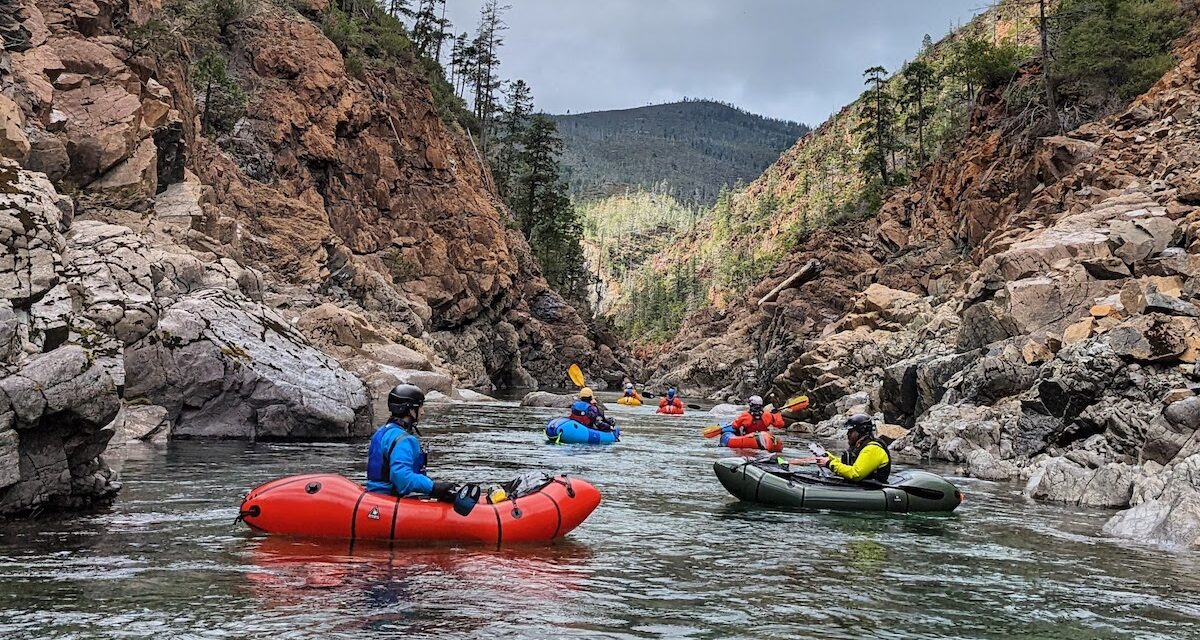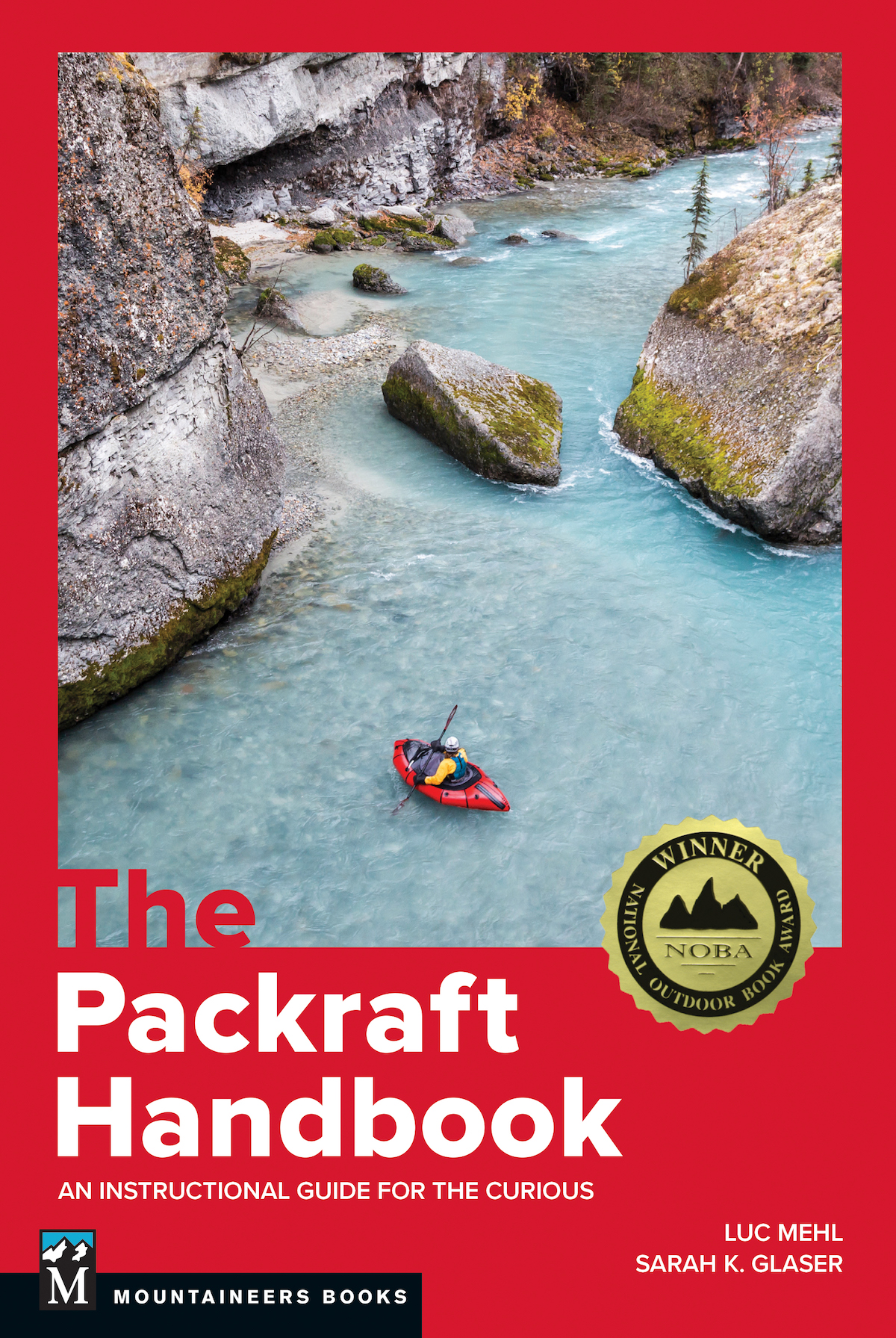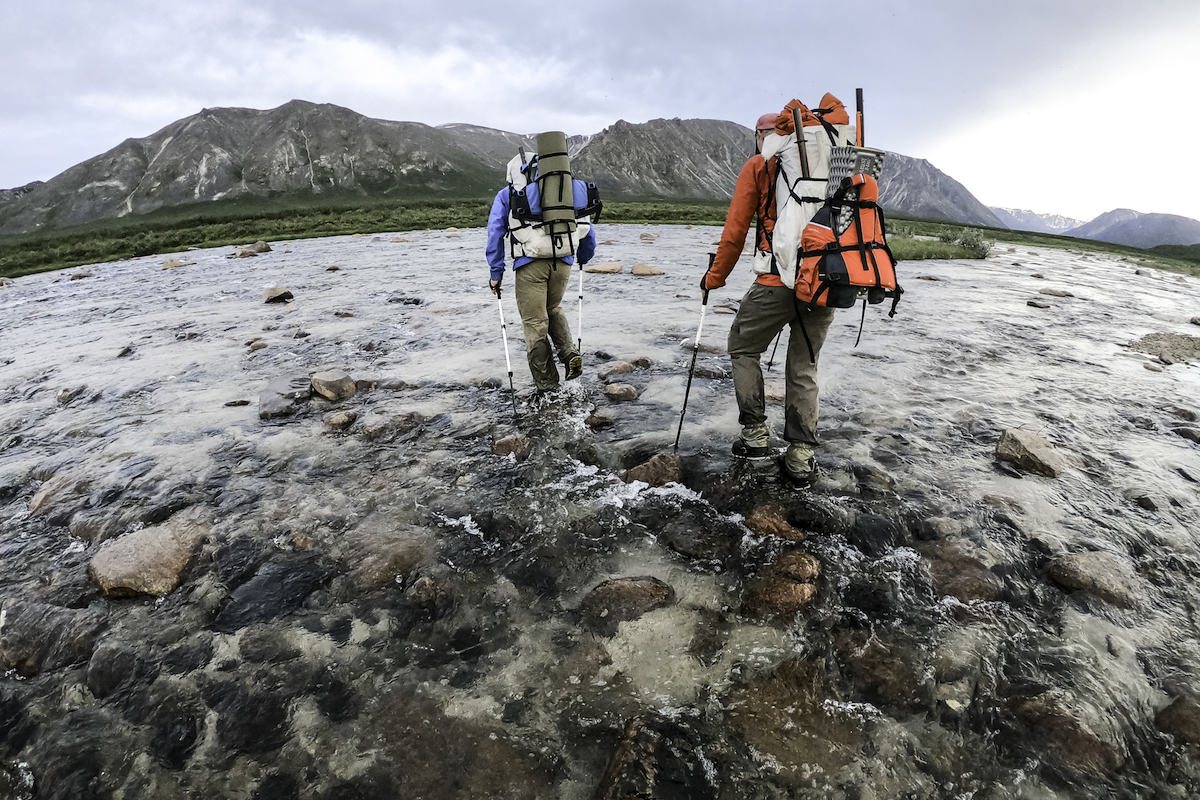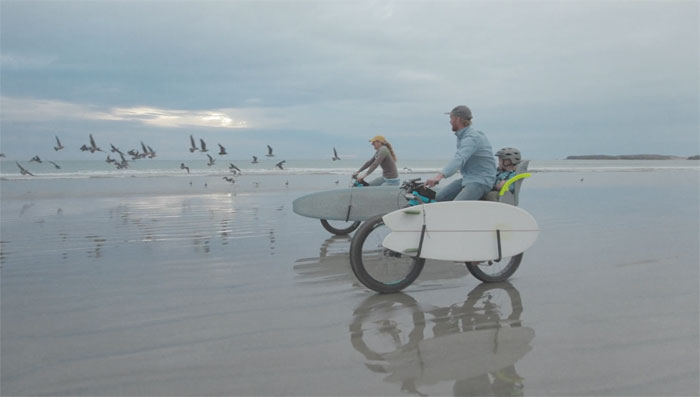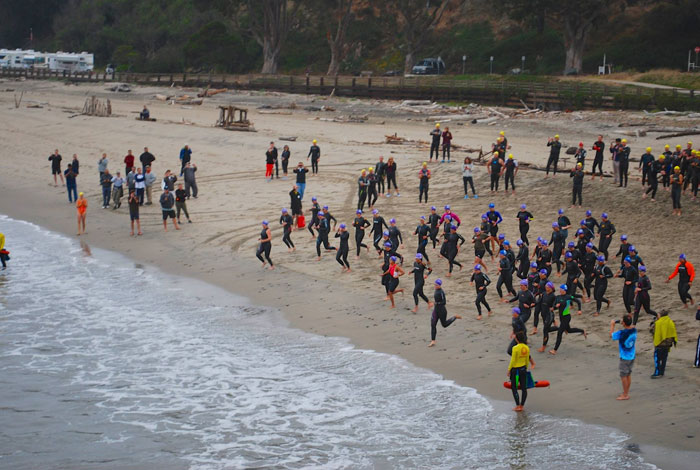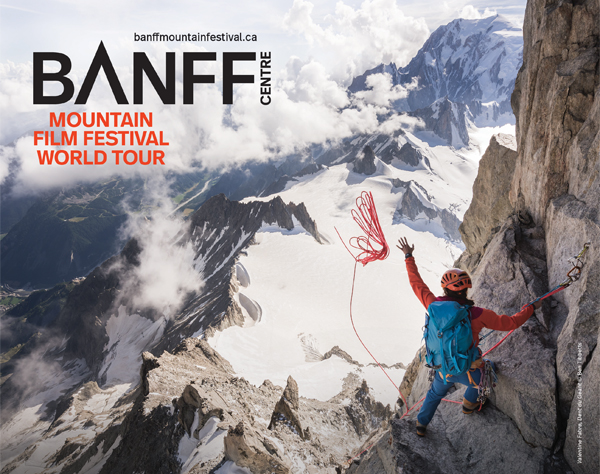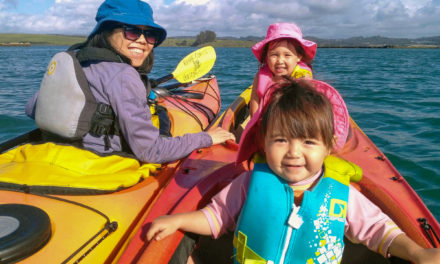- Jerry Meral: Champion of River Conservation for 50 Years - 07/11/2024
- Jerry Ashburn: Adventure Pioneer to Riverside Host - 04/24/2024
- Tulare Lake: Welcome Back Pa’ashi - 09/15/2023
How collapsible boats are changing backcountry exploration
By Anthea Raymond
What can weigh less than seven pounds, fit into your pack, and take you places you never dreamed possible? For more and more of us, it’s a packraft: a light, durable, inflatable boat that goes pretty much anywhere.
Some packrafts are designed for high adventure, multi-day experiences combining backpacking and stout whitewater like a Class V section of the Middle Fork of the Kings River (aka Middle Kings) or the headwaters of the Kern. Others work great for floating or fishing on a remote lake in the Sierra such as Crowley. Mountain bikers use them to drift their bikes down waterways. Packrafts have even been used on California coasts, especially where tide changes leave paddlers high and dry. And, of course, they make for family fun on a nearby reservoir or sheltered bay.
The modern packraft movement started in Alaska, where water complicates almost every adventure. The super-light packraft was a solution. A decade ago, the center shifted to the Rockies and Wyoming. Now, interest and activity is everywhere. California is more complicated than some places, with snow and rain creating mostly spring and summer options.
Packrafters point to the “freedom, solitude, and joy” found in reaching pristine places. But new packrafters tend to progress too rapidly and don’t always understand the risks, says Luc Mehl, the author of The Packraft Handbook, the bible of this quickly growing sport. “You can be a phenomenal hunter, backpacker or mountaineer. But water is a game changer,” he adds.
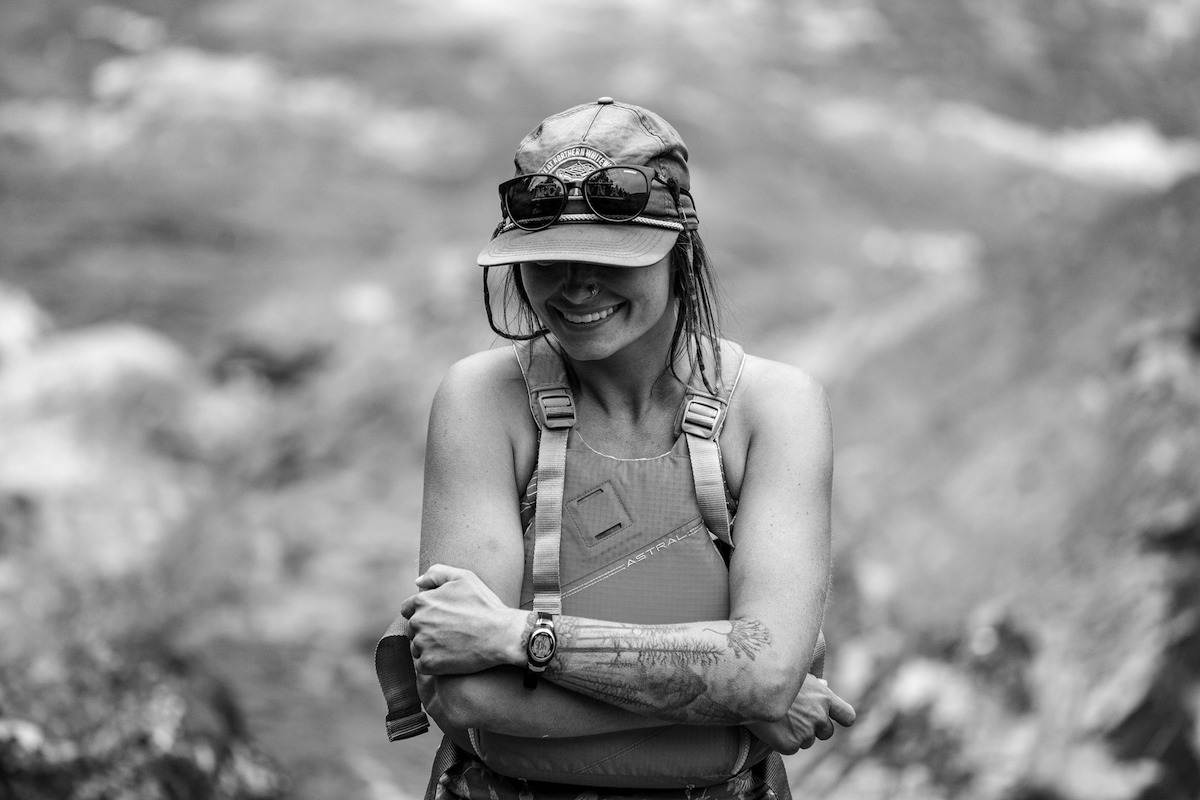
Personal flotation devices (PFDs) are required by law and keep you safe in moving water (Gareth Tate/Astral)
Creating a Culture of Safety
Mehl only learned to swim in college. He too first explored the outdoors as a backpacker and skier. But when he saw how packrafts extended his reach, he was hooked. Then, in 2014, he lost a close friend on the water. He committed himself to creating a culture of safety around the sometimes too-accessible sport, eventually becoming a swiftwater rescue instructor.
“What is also often missing for backpackers-turned-paddlers,” says Mehl, “is boat control. When I first started, I paddled like a hiker, and bombed straight down the river. I had to learn how a river works,” to use eddies and other features to navigate. Learning to rescue yourself and others is also key. Mehl’s book has a detailed chart for assessing your skill level and communicating that to others. “People get into trouble by choosing the wrong destinations for their skill level and equipment,” he says.
Gearing Up
A raft and related gear should add between ten and 15 pounds to your pack, with your boat a big part of that. The two leading packraft manufacturers are Kokopelli and Alpacka Rafts. They offer many models, suitable for many goals. Other inflatable kayak companies, like Advanced Elements, have also added packrafts to their product line. Most weigh from five to ten pounds and are made of durable nylon. They can be outfitted with a range of features including thigh straps, self-bailers, spray decks, and built-in gear storage. Some are installed at a buyer’s request, some are removable to adapt to conditions. They also generally come with an air pump, a soft bag that pushes air into the boat, and a repair kit.
Packrafters also need a lightweight paddle, preferably one that you can “break down” to fit in your pack. Aqua Bound has a light four-piece model as does Kokopelli. By law, you must also wear a personal flotation device (PFD), a life vest with flotation to keep you safe in moving water. NRS makes a good basic vest, with Astral and Stohlquist offering more deluxe models. Your vest should fit snugly, so it doesn’t cover your face when you float.
On a lake or other flatwater, you may not need a helmet. But even in Class I moving water, consider it essential. NRS again has a variety of reasonably priced models. For most settings, you will also want paddling or approach shoes that drain and dry quickly, as well as clothes that keep you warm and dry in your boat. Depending on water temperatures that might mean a wetsuit or drysuit even in summer. Water from freshly-melted snow can be quite dangerous, no matter what the outdoor temperature.
Take Your Time
There’s also much to be learned about paddling, packing, planning, risk assessment, and rescue. And experts agree: it shouldn’t be learned on the fly — and certainly not on a multi-day adventure. They say Mehl’s book is a great tool, with its foundational chapters for the beginner and more advanced sections on rivers, rescue, trip planning emergencies, packing, and more.
Joseph Bell of the American Packrafting Association (APA), an education and advocacy group for packrafters, advises finding mentors and taking a class if you can. In California, Melissa DeMarie’s California Watersport Collective has offered packrafting courses for several years as well as private lessons. Consider also swiftwater training — Sierra Rescue is the go-to — even if it is not specific to packrafting. An introduction to whitewater kayaking class will also teach you relevant skills, including water reading, risk assessment, and trip planning. Robin Levick, a California packrafter, says classes are also a great way to meet people in the wider paddling community.
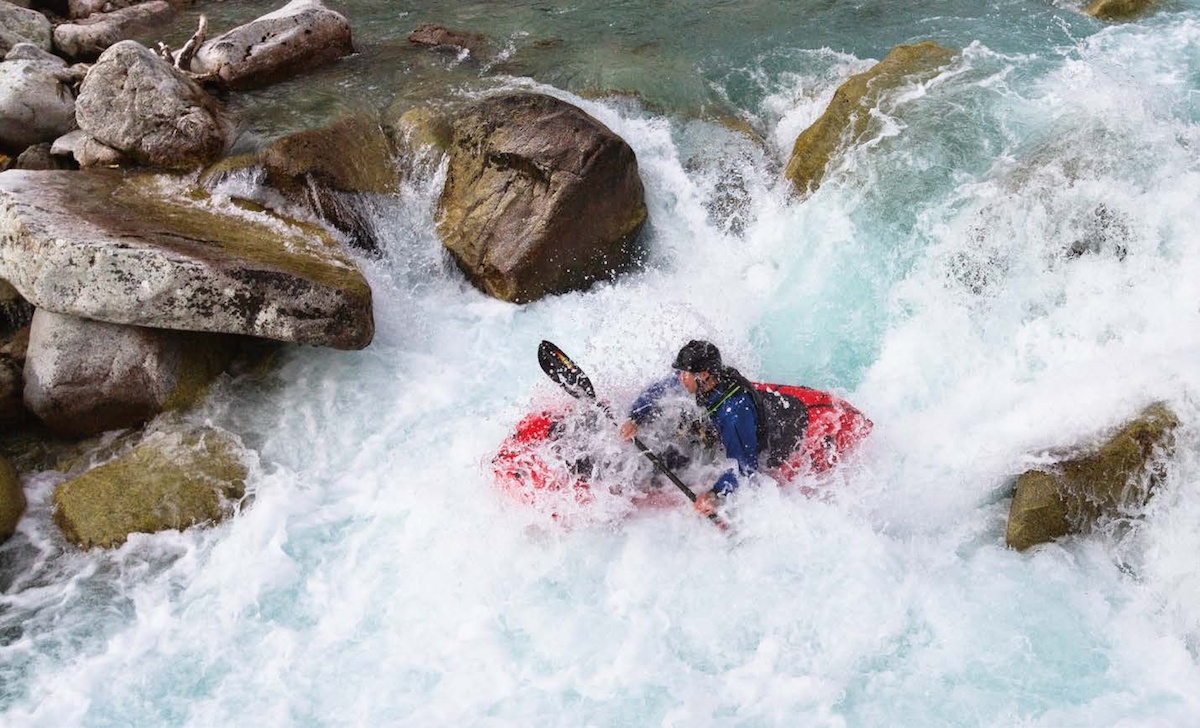
Make sure to take your time to learn the skills necessary to get into packrafting. Pictured here is a paddler bracing to stay upright on the Kings River in Alaska (Luc Mehl)
Levick is also active on the California Packrafting Facebook page, where local packrafters share tips about gear and trips. The group also hosts live events, like its Fourth Annual California Packraft Soirée, on the South Fork of the American River August 19-21, 2022. The APA also has a forum where you can find trip reports and other info related to California.
Mehl and others mentioned here have also helped develop the new packrafting curriculum that the American Canoe Association (ACA), the nation’s oldest paddling organization, is launching. Students can progress through flatwater, and Class I and II whitewater. The ACA has already started certifying its first wave of instructors. Some work in California, so look for more classes soon.
In the meantime, to get going safely, be solid in flatwater with strokes, river knowledge, gear assembly, and self-rescues. “Go to a local waterway and practice, practice, practice,” says Mehl. “Be sure you can get back into your boat.” Sheltered bays like the Naples canals in Long Beach or the shore along Catalina Island are great jumping off spots. Then, take baby steps, perhaps on Class I runs you find on the Dreamflows, California Creeks, or American Whitewater websites.
A popular run at this level is Redwood Creek in the Redwood National Park. (Just pick the right season, in summer, pontoon bridges block sections.) The APA’s Bell, who lives in California, says the trip showcases what is special about packrafting: a hike to an otherwise unreachable put-in, amazing scenery, and a finish at the ocean and your car — all in one day. Note: you’ll need a shuttle driver for this one, though many packraft trips make loops, with a pack in and a paddle out. Others suggest the Owens River in Central California for a similar experience.
Levick also puts parts of Cache and Butte creeks, and even sections of the Sacramento, Yuba, Russian, and Mokelumne rivers, on the list. He recommends calling outfitters running those sections for advice. He also says gentle tidal estuaries and river mouths can sometimes be good places for beginners to experiment with moving water. And, he adds, “Read Luc Mehl’s book. It should really come with every packraft sold.”
The Packraft Handbook by Luc Mehl, is published by Mountaineers Books — an independent non-profit publisher based in Seattle, WA with over 60 years of publishing, 800 titles and award-winning publications. Learn more at mountaineers.org
MAIN IMAGE: Paddlers enjoying a flat section of the North Fork of the Smith River (Robin Levick)

